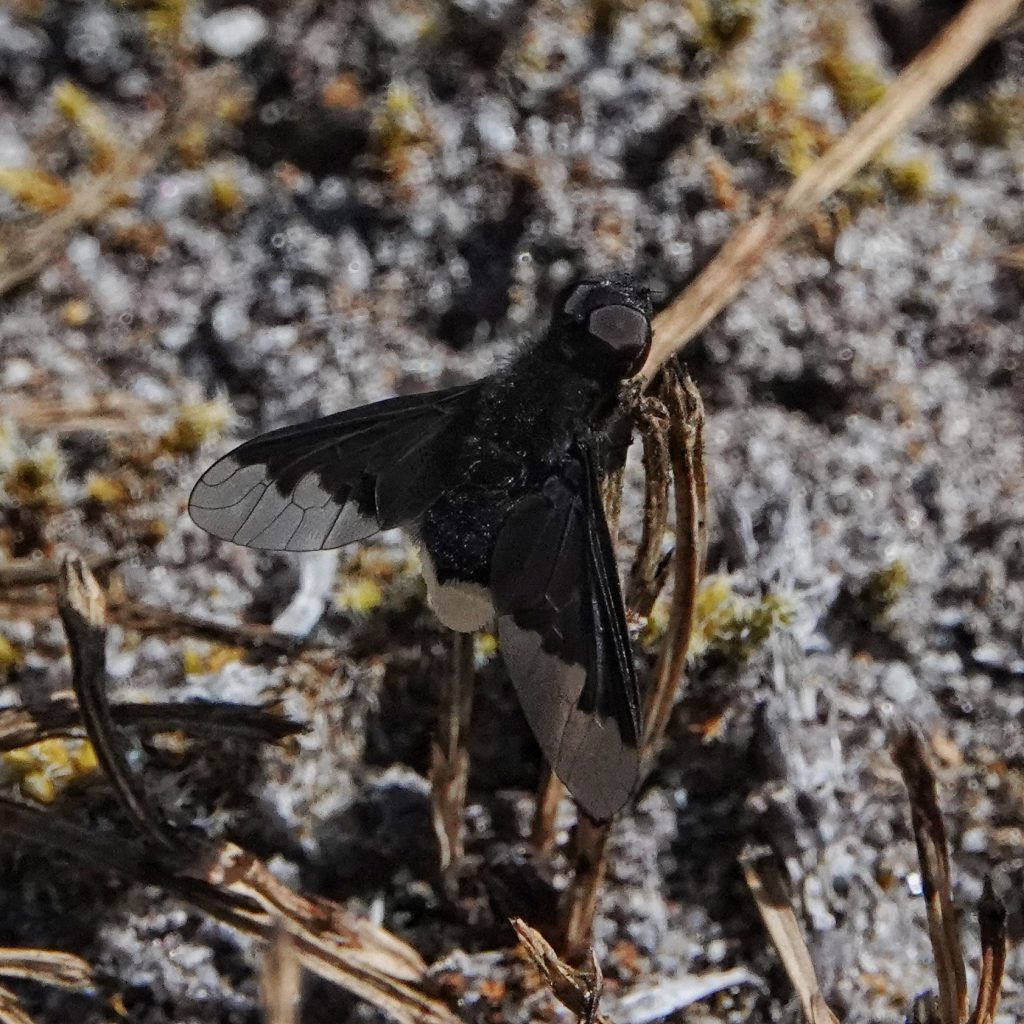
This was undoubtedly the find of the day on the trip to the Mt. St. Helens area that I talk about in ‘Exploring Attachment to Outcomes’! It wasn’t really on my radar when I thought about the trip, although the number of bee flies (Bombyliidae) I was seeing, in conjunction with the number of tiger beetles (mostly Cicindela oregona) I was finding, did soon make me wonder, since I knew that there was a bee fly that specialized in parasitizing tiger beetle larvae (freshly hatched larvae crawl into the brood chamber of the tiger beetles and attach to the larvae there), although I couldn’t remember which one or what it looked like. Turns out that it’s Anthrax georgicus, and it’s apparently the only North American member of the genus Anthrax that is not a parasitoid of Hymenoptera.
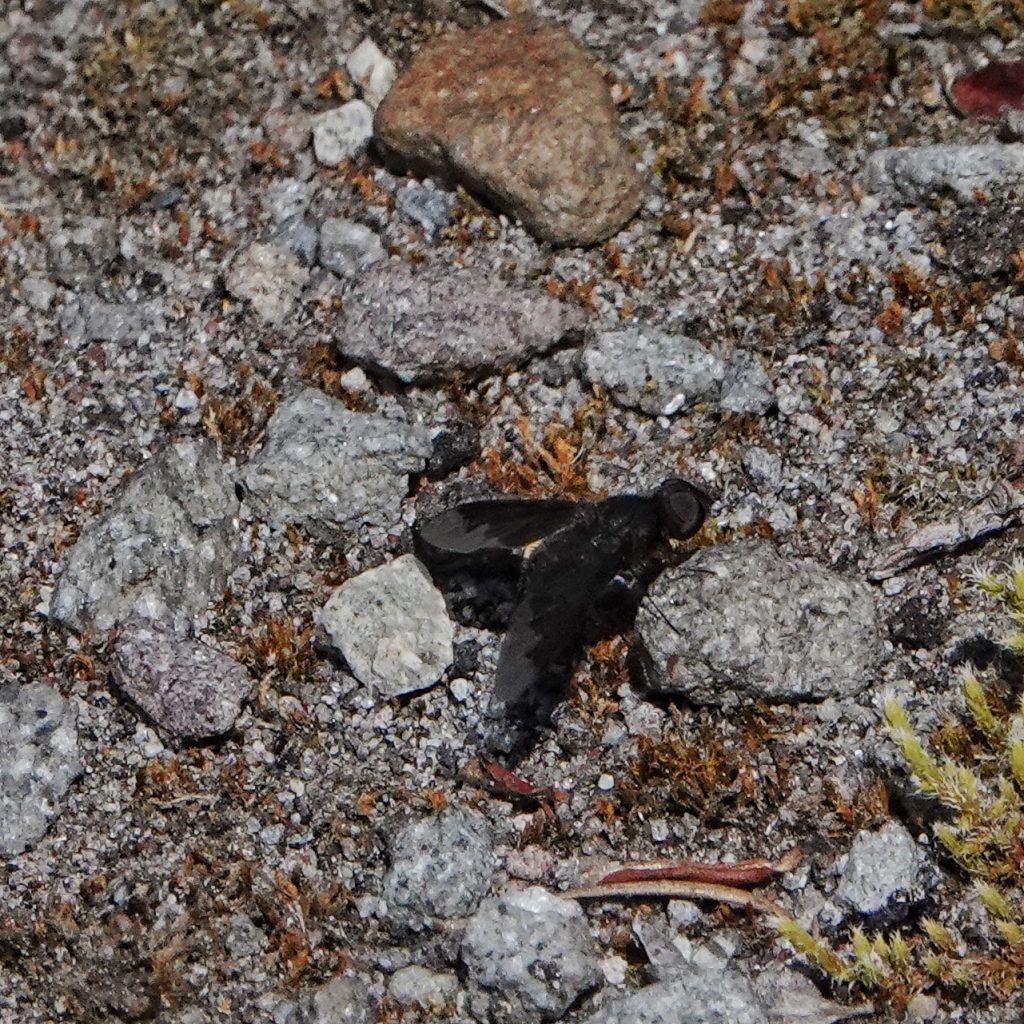
I’d guess I saw about a dozen of these handsome bee flies whilst wandering the pumice and ash plain where McBride Lake used to be. Most of them were drifting slowly over slightly raised areas of the ground, occasionally hovering in one spot for a few seconds.They were undoubtedly searching for active tiger beetle burrows, hoping to flip eggs into them, much like the Anthrax irroratus I recently profiled. I didn’t see any ‘egg flipping’ going on, but I wasn’t usually as close as I’d have liked, and I was trying to get photos. I did see a couple that were perched, and one let me get fairly close. These flies can put a real dent in larval survival for some tiger beetle populations, and a significant proportion of tiger beetle larvae at some sites fall prey to these parasitoids.
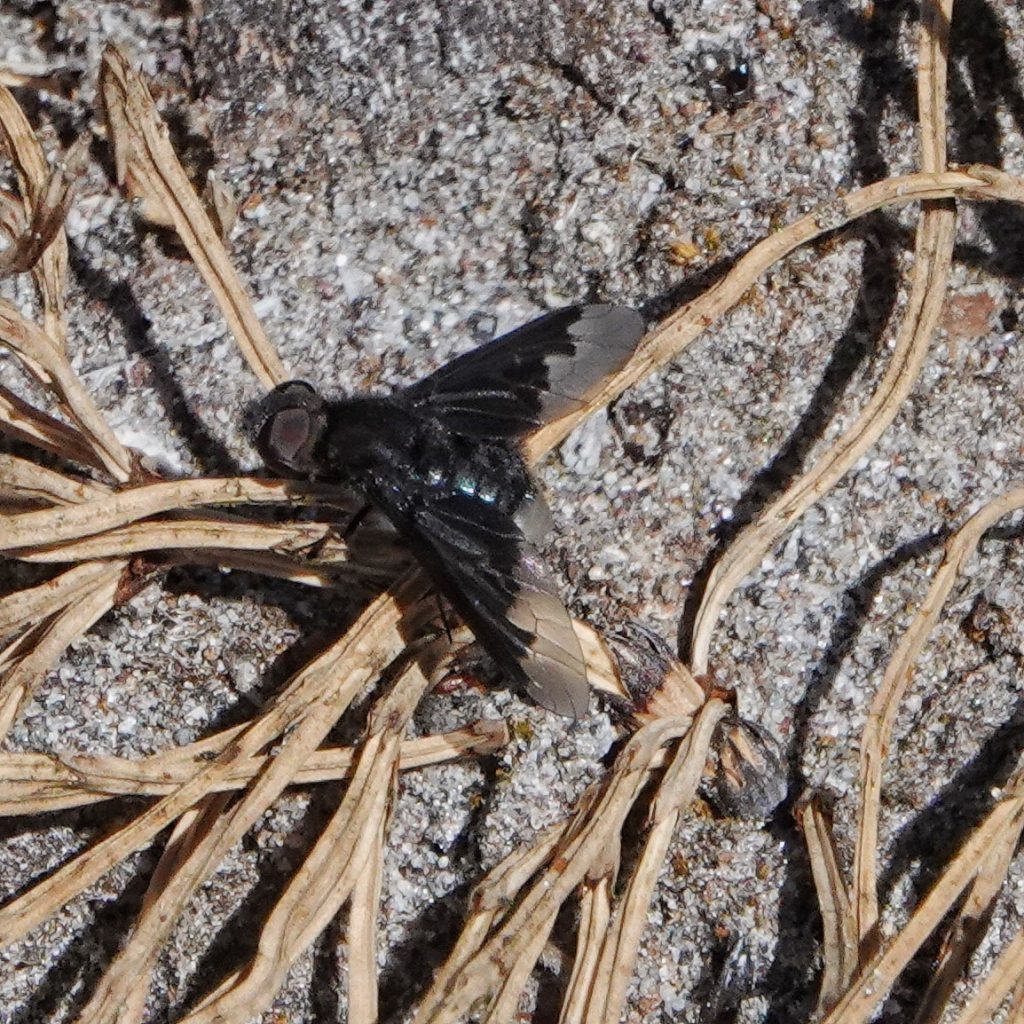
Description-Medium sized (7-10mm), mostly black bee fly, with solid black pigmentation covering over half the wing, and usually with an undivided, white to silver grey, last 3 abdominal segments.
Similar species–Hemipenthes morioides has clear areas at the crossveins of the wings; Thyridanthrax atratus has ‘windows’ in the black wing pigment; Anthrax argentatus has less black on wing and a divided light colored patch on last abdominal segment; other Anthrax sp. in our region have black pigment broken into blobs and speckles.

Habitat-Wherever there are tiger beetles, so often along shorelines, and other fairly flat, relatively open, areas with sandy or otherwise exposed soil.
Range-The Americas; possibly region wide in appropriate habitat.
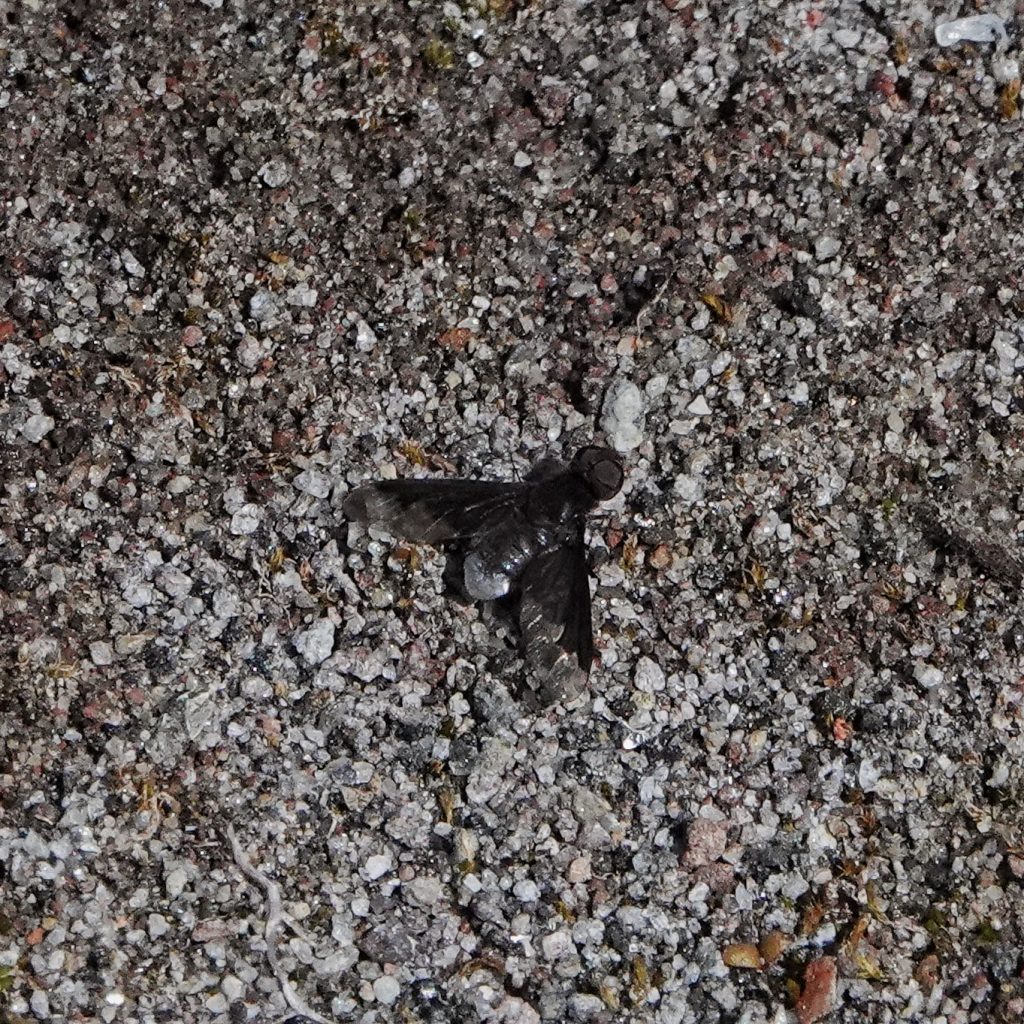
Eats-Larvae are ectoparasitic on tiger beetle larvae; adults feed on pollen and nectar.
Eaten by-I would guess they are preyed upon by insectivores of all classes
Adults active-Probably June through September, depending on latitude and elevation.
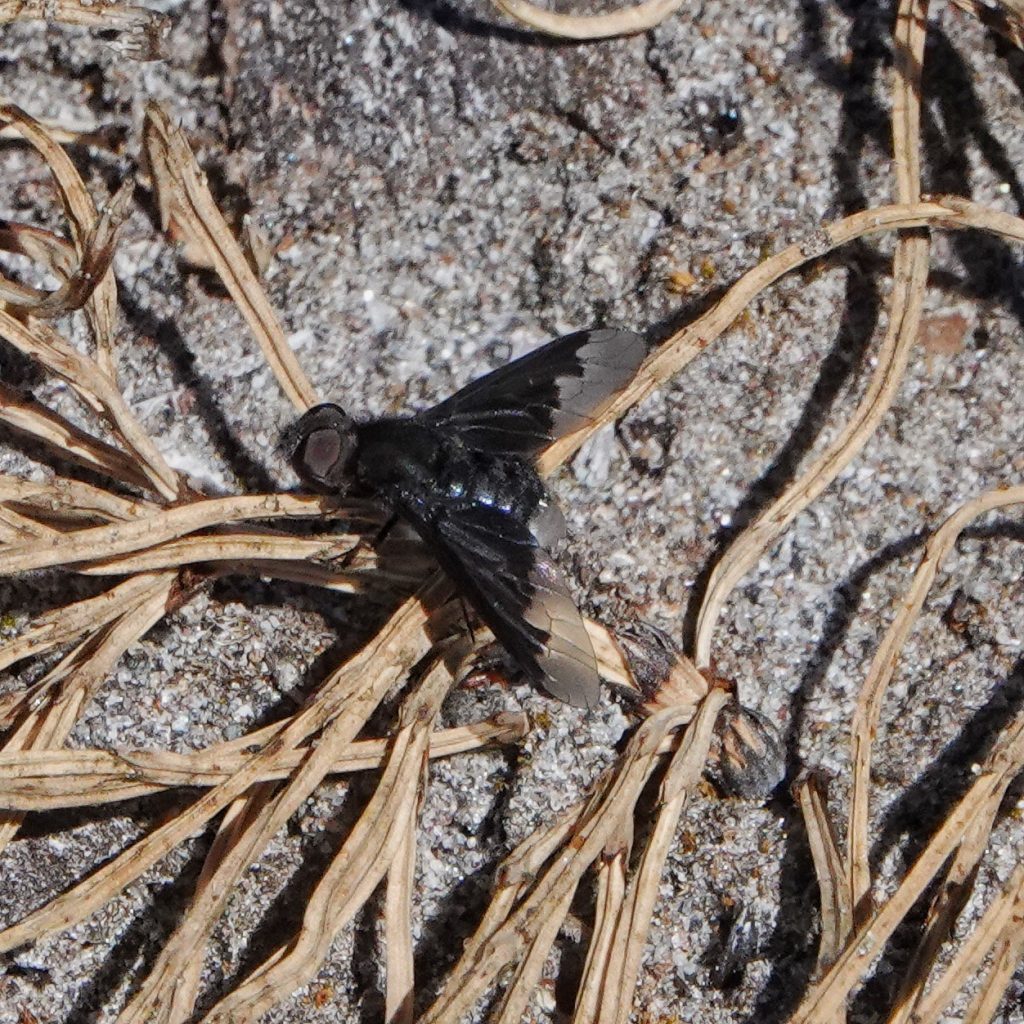
Life cycle-Eggs are flipped near or in the burrows of tiger beetles; when the egg hatches the bee fly larvae crawls through the burrow to the brood chamber, attaches to the larvae of the tiger beetle, and begins consuming its hemolymph; as the two larvae age the bee fly larvae eventually begins consuming the body of the tiger beetle larvae; when the food source is gone the bee fly pupates; since the host overwinters in its burrow, the bee fly must do the same, emerging from pupation in early summer; appears to only live 4-8 weeks in the adult stage.
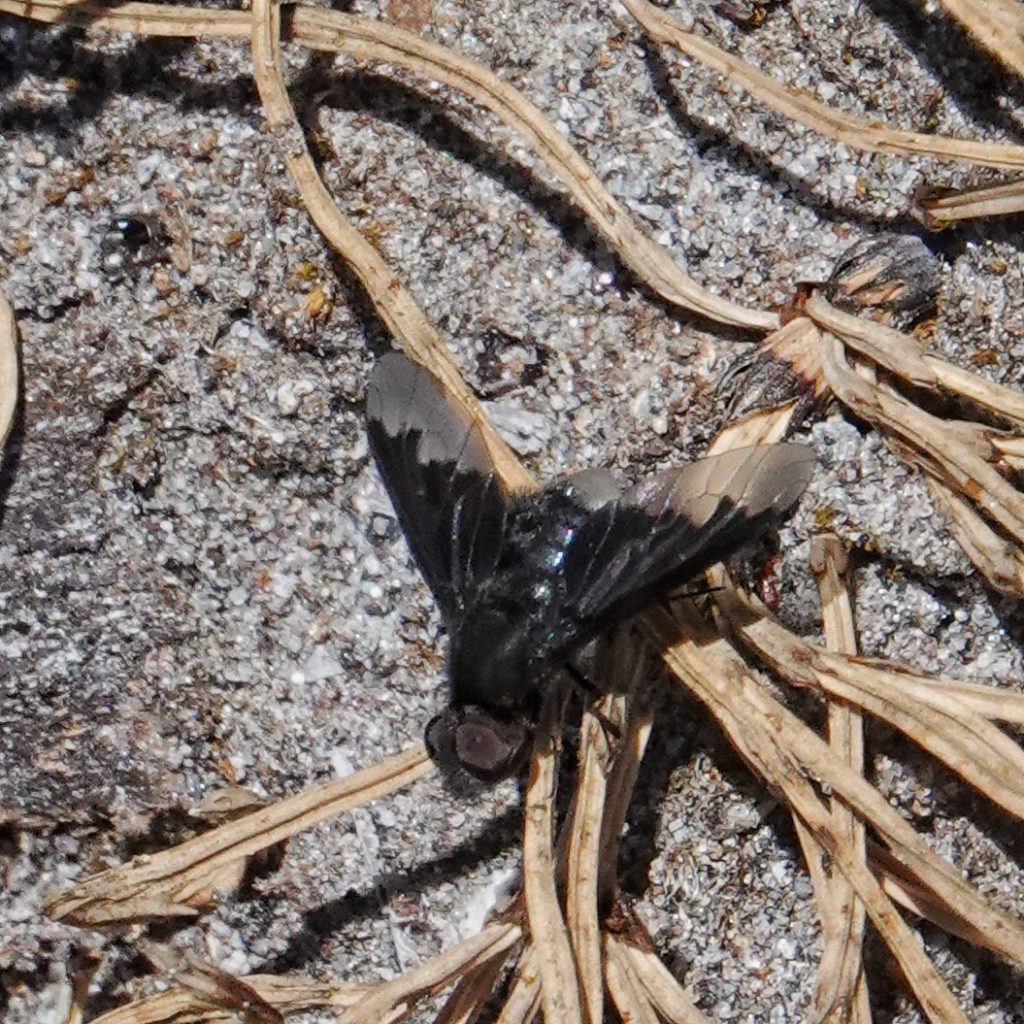
Etymology of names–Anthrax is from the Greek word for ‘coal’, and presumably refers to the dark black head and thorax of many members of the genus. The specific epithet georgicus presumably honors an esteemed George, but I cannot ascertain which one. This species also is known by the epithet analis, probably referring to the light coloring on the rear of the abdomen. I’m not sure why the latter epithet is not the currently accepted one, since Say used it 11 years earlier than Macquart used georgicus.
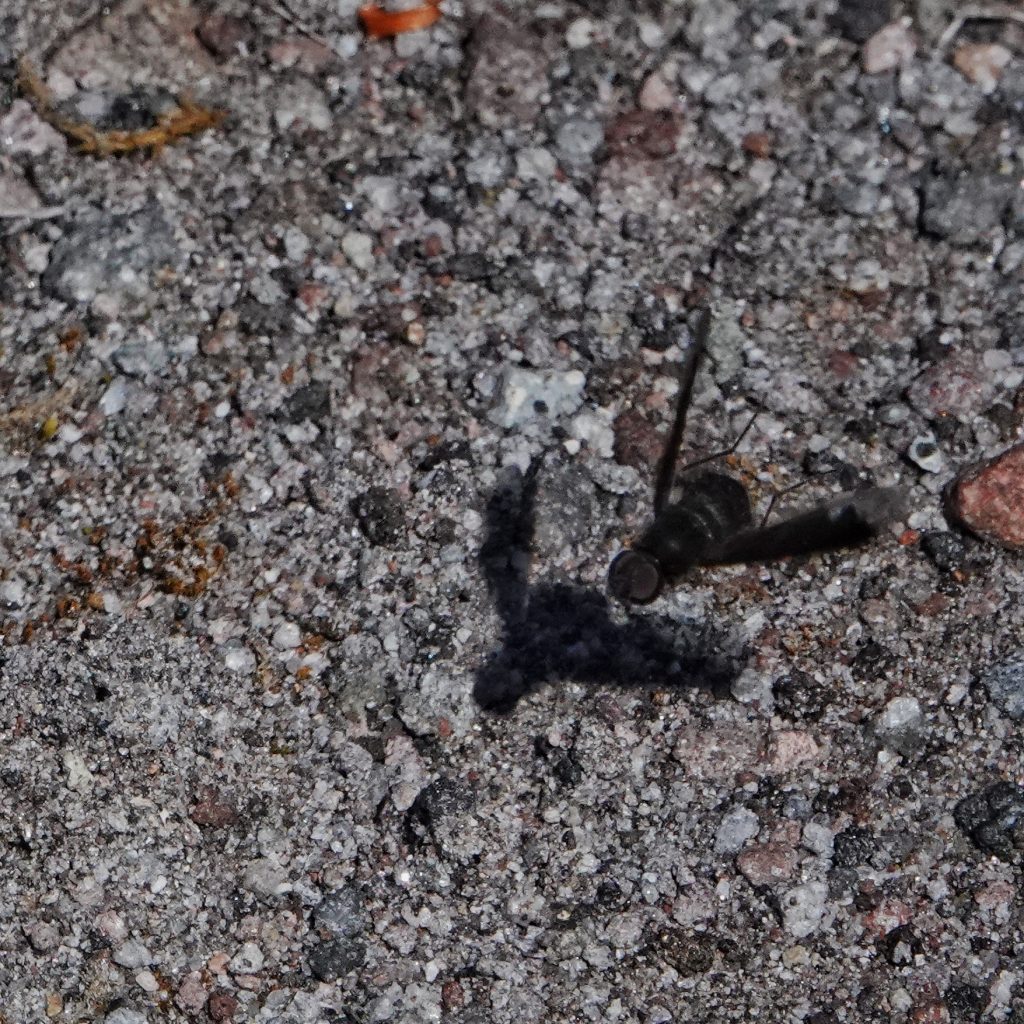
Species Anthrax georgicus – BugGuide.Net
Maryland Biodiversity Project – No Common Name (Anthrax georgicus)
Bee Fly, Anthrax georgicus (Bombyliidae). Photo by Claudia Burns. | Download Scientific Diagram
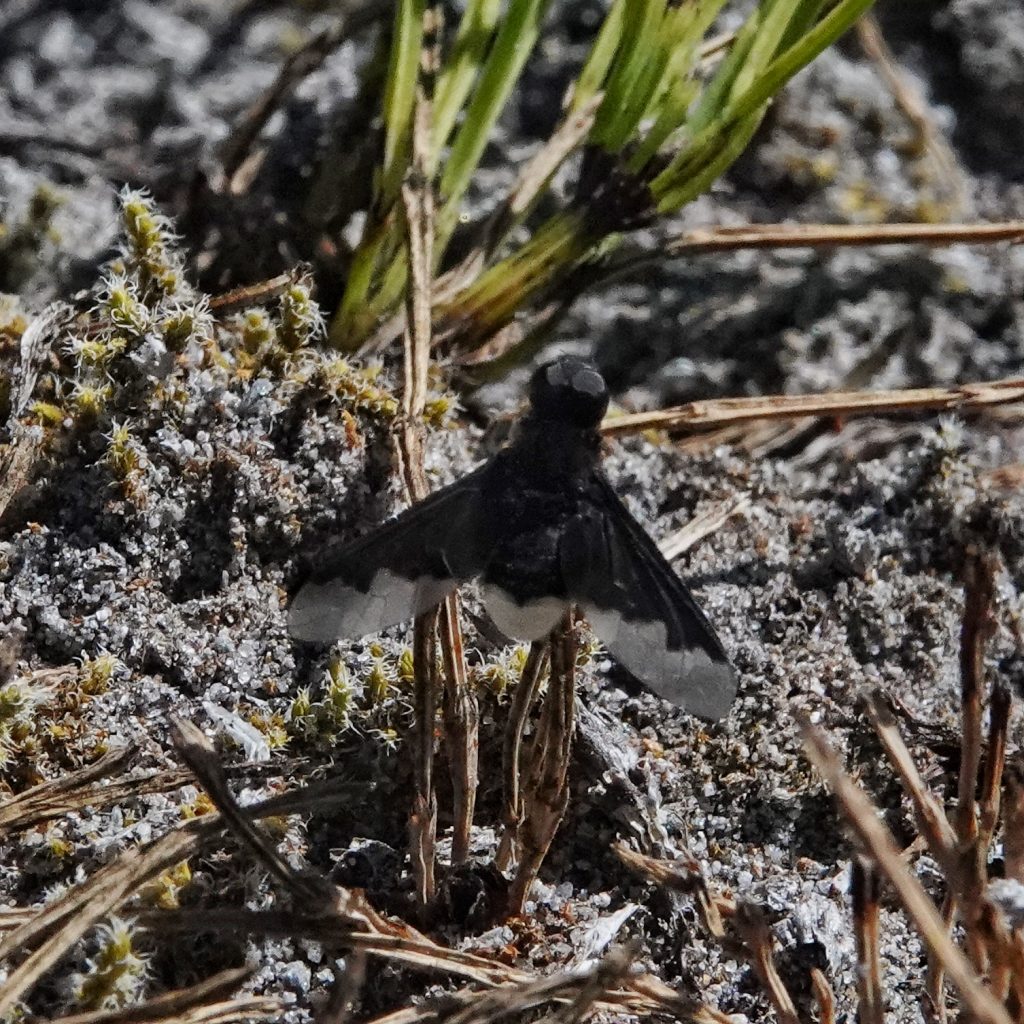
Those are so cool!